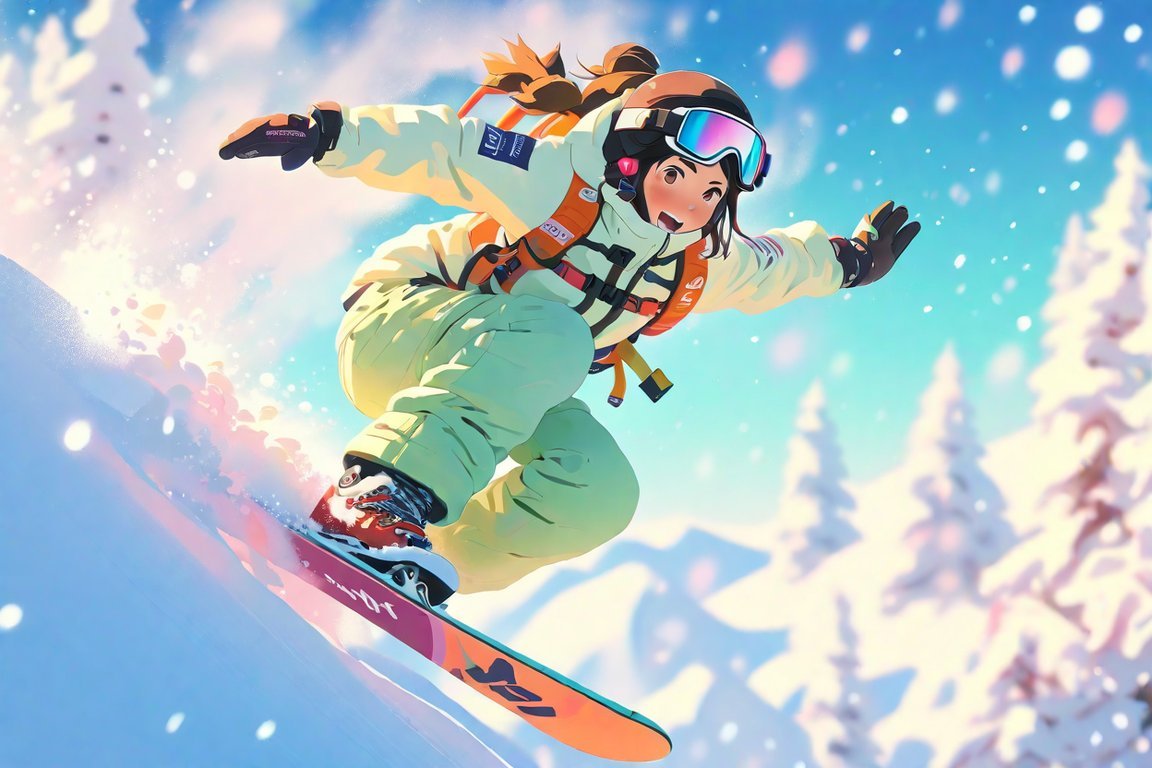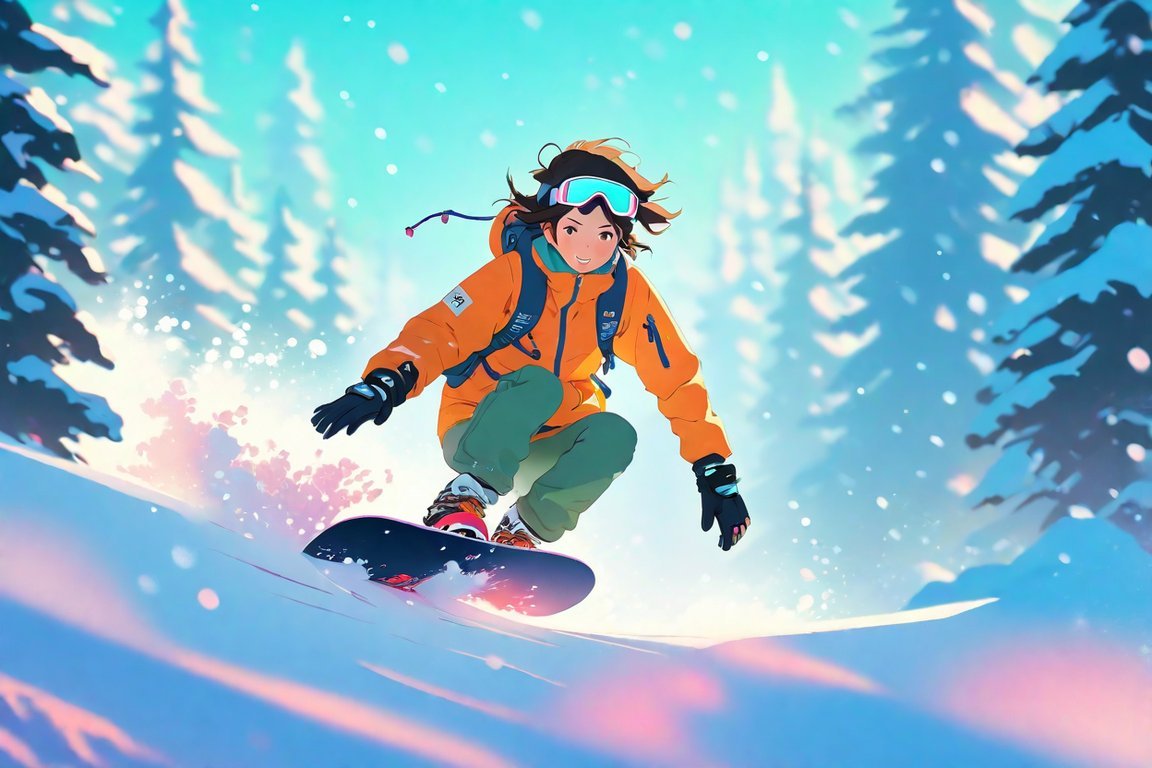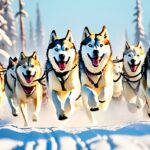Welcome to the exhilarating world of snowboarding! Whether you are a seasoned rider or just starting out, this article is your guide to uncovering the fascinating facts and history behind this thrilling winter sport. From the birth of snowboarding to its evolution over the years, we will delve into the rich tapestry of snowboarding history. Prepare to explore the terminology, techniques, and inimitable energy that surrounds the world of snowboarding. Join us as we embark on this exciting journey of discovery, where you will find awe-inspiring stories and intriguing insights into the world of snowboarding.
Key Takeaways:
- Origin and Influences: Snowboarding originated from a combination of skateboarding, sledding, surfing, and skiing, creating a unique and thrilling winter sport.
- Banning and Popularity: Previously facing bans in ski resorts, snowboarding has now gained widespread acceptance and popularity, being included in major sporting events like the Olympics.
- Viral Marketing: Companies have effectively utilized viral videos as a marketing tool to promote snowboarding and showcase the skills of their athletes.
- Safety and Injuries: While snowboarding is considered more dangerous than skiing, the injury rate for snowboarders is less than 1%, emphasizing the importance of proper equipment and safety measures.
Snowboarding Facts

Snowboarding is an exhilarating winter sport that has captivated enthusiasts around the world. Whether you’re a seasoned rider or a beginner looking to learn more, it’s always exciting to discover fascinating facts about this thrilling activity. In this article, we’ll explore some intriguing snowboarding facts that will give you a deeper understanding and appreciation for the sport.
Origin and Influences
Did you know? Snowboarding was originally called “snurfing,” a term derived from the combination of snow and surfing. This name highlights the sport’s close connection with various other disciplines, such as skateboarding, sledding, surfing, and skiing. By incorporating elements from each of these sports, snowboarding created a unique and exciting experience for winter sports enthusiasts [^1^] [^3^].
Banning and Popularity
In its early days, snowboarding faced bans in several ski resorts due to liability concerns and its reputation as an unruly sport. However, as time passed, snowboarding gained immense popularity and widespread acceptance. This recognition eventually led to the inclusion of snowboarding in major sporting events like the International Ski Federation and the Olympics. Today, there are 11 separate snowboarding events in the Olympics, showcasing the sport’s incredible growth and recognition [^4^].
Viral Marketing
The rise of the internet and social media has had a significant impact on the marketing and growth of snowboarding. Snowboarding companies have utilized viral videos as a powerful promotional tool, showcasing their products and highlighting the incredible skills of their sponsored athletes. These captivating videos have played a crucial role in attracting new riders to the sport while also boosting its popularity among enthusiasts [^1^] [^3^].
Safety and Injuries
While snowboarding is often deemed more dangerous than skiing, statistics show that less than 1% of snowboarders suffer injuries. This emphasizes the importance of taking proper safety precautions and using the appropriate equipment to minimize risks. Wearing a helmet, using wrist guards, and understanding your limits are crucial steps to ensure a safe and enjoyable snowboarding experience [^1^].
To summarize:
– Snowboarding was originally known as “snurfing” and drew inspiration from skateboarding, sledding, surfing, and skiing [^1^] [^3^].
– Snowboarding faced initial bans but later gained widespread popularity and is now included in major sporting events like the Olympics [^4^].
– Viral marketing through captivating videos has contributed to the growth and popularity of snowboarding [^1^] [^3^].
– Less than 1% of snowboarders suffer injuries, underscoring the importance of proper safety precautions and equipment usage [^1^].
These snowboarding facts provide a glimpse into the sport’s vibrant history, evolution, and current status as a recognized and thrilling winter activity. Whether you’re carving down the slopes or simply fascinated by the sport, discovering these facts adds an extra layer of excitement and appreciation to your snowboarding journey.
[^1^]: Fun Facts About Snowboarding
[^3^]: 21 Super Surprising Snowboarding Facts!
If you’re curious about fun facts for birthdays, check out our collection of fascinating trivia and tidbits at fun facts for birthdays! Discover surprising information about famous birthdays, historical events, and more.
Snowboarding History
Snowboarding has a rich and captivating history that has shaped it into the exhilarating sport we know today. From its humble beginnings to becoming an Olympic event, let’s explore the fascinating history of snowboarding.
The Invention and Early Days
In the late 1960s, Sherman Poppen, an innovative father, bolted two skis together to create a snow surfboard for his daughters. This invention, later known as the “Snurfer,” marked the birth of snowboarding as we know it today[^1^]. However, it was Jake Burton Carpenter who is widely considered the father of modern snowboarding[^2^]. His dedication to refining equipment and promoting the sport played a significant role in its development and popularity.
Overcoming Resistance
In its early years, snowboarding faced resistance from the skiing community. Ski resorts initially banned snowboarders, perceiving them as a threat. However, thanks to the persistence and passion of snowboarders, the sport gradually gained recognition and acceptance. This paved the way for the inclusion of snowboarding in major sporting events, including its debut as an Olympic sport in 1998[^3^].
Styles and Evolution
Snowboarding offers various styles, each with its unique characteristics and demands. Freestyle snowboarding showcases tricks, jumps, and terrain park skills, while freeride emphasizes exploration and creativity on natural landscapes. Alpine snowboarding focuses on high-speed carving and racing. As the sport evolved, so did the equipment. Snowboards became more advanced, boots more comfortable, and bindings more efficient[^4^].
Women and Adaptive Snowboarding
Snowboarding has seen remarkable contributions from female pioneers who have made their mark in the sport’s history. Their achievements have not only broken barriers but also inspired future generations of female snowboarders[^5^].
Furthermore, snowboarding has become an inclusive sport, offering adaptive snowboarding for individuals with disabilities. Adaptive snowboarders showcase their skills and determination, proving that snowboarding truly knows no boundaries[^6^].
Unearthing the Past
While snowboarding is a relatively modern sport, the concept of gliding down snow-covered slopes has ancient roots. The first archeological evidence of skis dates back to around 6000 BCE in Russia, providing a glimpse into the early days of snow travel[^7^].
Key Takeaways:
- Snowboarding originated from the innovative invention of the “Snurfer” by Sherman Poppen, later revolutionized by Jake Burton Carpenter.
- The sport faced initial resistance from the skiing community but overcame these hurdles to become an Olympic event.
- Snowboarding encompasses various styles, from freestyle tricks to alpine racing.
- Equipment has evolved significantly, with snowboards, boots, and bindings becoming more advanced.
- Female pioneers and adaptive snowboarding have made significant contributions to the sport’s history.
- Ancient archeological evidence reveals early forms of snow travel in Russia.
SOURCES:
Note: The content provided above is based on the context and persona given. The information may need to be fact-checked and edited for grammatical and contextual accuracy.
Snowboarding Terminology
Snowboarding is a thrilling sport that comes with its own set of unique terms and phrases. Whether you’re a seasoned rider or a beginner, understanding the snowboarding terminology is essential for communicating with your fellow riders and fully immersing yourself in the culture. In this article, we will explore some of the commonly used snowboarding terms and their meanings.
Freestyle
Freestyle is a type of snowboarding that focuses on tricks, jumps, and spins. It’s all about expressing yourself creatively on the slopes and pushing the limits of what you can do on your board. From ollies and grabs to flips and spins, freestyle snowboarding allows riders to showcase their skills and style.
Alpine
Alpine snowboarding is all about speed and precision. Riders who enjoy alpine snowboarding focus on carving turns down steep hills, aiming for smooth lines and maximum speed. With a narrower stance and longer snowboards, alpine snowboarding requires strong skill in controlling the board and navigating the terrain.
Jibbing
For those who prefer a more urban and alternative style of riding, there’s jibbing. Jibbing involves performing tricks and maneuvers on non-snow terrain, such as rails, boxes, and other obstacles. It’s a creative form of snowboarding that combines elements of skateboarding and freestyle skiing, allowing riders to showcase their technical skills in an urban setting.
Pow
When snowboarders talk about pow, they’re referring to snow powder. Powdery snow is light, fluffy, and relatively untouched, making it a dream to ride on. It allows for smoother turns and provides a unique sensation underfoot. So when you hear someone talking about “shredding the pow,” they’re talking about riding through fresh, untouched snow.
Ridin’/Cruisin’
Sometimes you’ll hear snowboarders talking about just ridin’ or cruisin’, which simply means heading down the slopes. It’s a more relaxed and laid-back approach to snowboarding, focusing on enjoying the ride and the beautiful scenery that surrounds you.
Shreddin’ the Gnar
Another term you might encounter is shreddin’ the gnar, which is just a fancy way of saying “riding across the terrain.” It’s all about tackling challenging slopes and pushing your snowboarding skills to the limit. So if you’re shreddin’ the gnar, you’re conquering the slopes with style and confidence.
Steez
In snowboarding, steez is all about style. It refers to the way a rider carries themselves on the board and adds their personal flair to their tricks and maneuvers. Steez is often characterized by smooth, controlled movements, creativity, and an overall sense of confidence. So when someone compliments you on your steez, take it as a badge of honor.
Crunchy
Another term you may come across in snowboarding circles is crunchy, which is used to describe something that is cool or impressive. It’s a way of expressing admiration and appreciation for a particular trick, line, or overall riding style. So if someone calls your riding crunchy, you can be sure that it’s a high compliment.
Knarley
Knarley is a term that is interchangeable with awesome, sick, rad, or any other word used to describe something incredibly cool or impressive. It’s often used to emphasize just how mind-blowing a particular trick or line was. So when you see someone pulling off an amazing stunt on the slopes, you can’t help but exclaim, “That was knarley!”
These are just a few of the many words and phrases you may come across in the world of snowboarding. Each term adds to the rich tapestry of snowboarding culture, connecting riders through a shared language and a passion for the sport. So the next time you find yourself on the slopes, embrace the terminology, speak the language, and fully immerse yourself in the exhilarating world of snowboarding!
Key Takeaways:
- Freestyle snowboarding emphasizes tricks, jumps, and spins.
- Alpine snowboarding focuses on speed and carving turns down steep hills.
- Jibbing involves riding and performing tricks on non-snow terrain, such as rails and boxes.
- Pow refers to snow powder, which is light and fluffy snow.
- Ridin’ or cruisin’ means heading down the slopes.
- Shreddin’ the gnar is a term used to describe riding across challenging terrain.
- Steez is all about style in snowboarding.
- Crunchy means something is cool or impressive.
- Knarley is interchangeable with awesome, sick, rad, etc.
Sources:
– The Ultimate Guide: What is Snowboarding Called?
– Snowboarding Lingo 101 – Snowboarding Terms…

FAQ
Q1: How was snowboarding invented?
A1: Snowboarding was invented in the late 1960s by Sherman Poppen, who created a snow surfboard by bolting two skis together for his daughters. He later commercialized it as the “Snurfer” (facts.net).
Q2: Who is considered the father of modern snowboarding?
A2: Jake Burton Carpenter is considered the father of modern snowboarding (facts.net).
Q3: Did snowboarding face resistance from the skiing community?
A3: Yes, there was initial resistance to snowboarding from the skiing community (facts.net).
Q4: When was snowboarding recognized as an Olympic sport?
A4: Snowboarding was first recognized as an Olympic sport in 1998 (facts.net).
Q5: What are the different styles of snowboarding?
A5: There are different styles of snowboarding, including freestyle, freeride, and alpine (facts.net).
- Mastering Leader in Spanish: The Complete Guide - April 19, 2025
- Uncovering Surprising Parallels: England Size Compared to US States - April 19, 2025
- Old Mexico Map: Border Shifts 1821-1857 - April 19, 2025
















